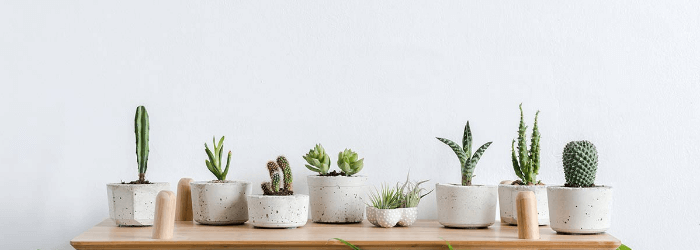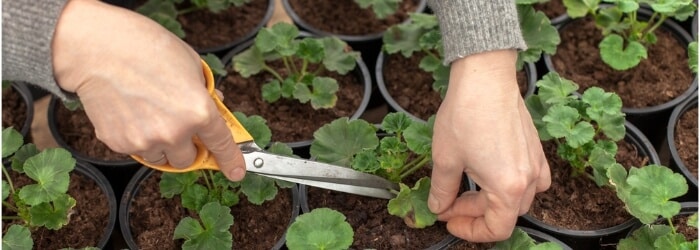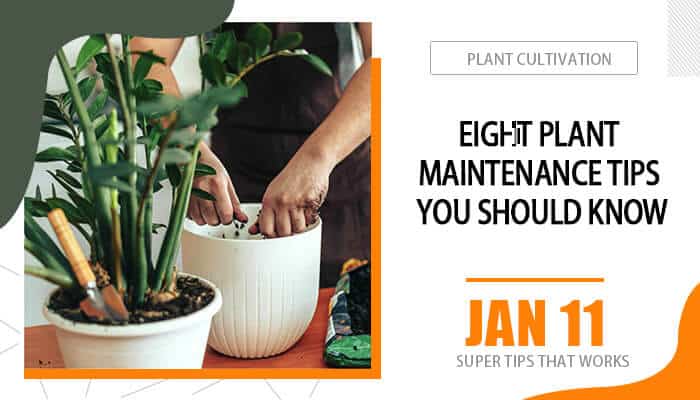Growing plants indoors may be a simple concept. However planting is just the beginning, after raising plants, it means you need to learn growing techniques and spend time maintaining the plants. Many people struggle to keep their plants alive at first, but if you can master plant maintenance, you will never have to envy your friends and neighbors’ green thumbs again.
8 Plant Maintenance Tips – Green Thumb Essentials
Learn plant maintenance tips to start your plant care journey and keep your green thumb alive. Put these tips to use once you’ve completed your studies.
Content preview:
- Proper Light Schedule
- Choose The Right Pot
- Loose And Breathable Soil
- Choose The Right Plant
- Scientific Watering And Fertilization
- Pruning
- Air Circulation
- Useful Tools
1: Proper Light Schedule
Light is food for plant growth, and keeping plants indoors will lack sunlight. You can place plants near a south-facing window to draw enough sunlight. If you live in a place that lacks sunlight, then adding artificial light becomes an indispensable part of indoor growing. It is important to note that artificial light differs from sunlight in that plants spend approximately twice as much time under artificial light as sunlight. The grower sets the right light schedule for the plant depending on its characteristics, shade or sun preferences. The artificial light that is now widely used for planting is led grow lights, which help plants photosynthesize in the same way as the sun’s rays. If you don’t know how to choose a grow light, click on the link to get a grow light buying guide.
2: Choose The Right Pot
First of all, the plant pot must be chosen correctly, of which breathability and size are the most important. Generally speaking, the pots on the market are mainly plastic, ceramic, glazed ceramic pots and so on. In terms of material, ceramic pots are more breathable and are the default choice for gardening, which can reduce the difficulty of raising flowers. Plastic pots are lightweight and easy to operate, with many pores and good breathability, more suitable for indoor planting. Glazed ceramic pots are sturdy, heavy and good-looking. However, they are less practical and more expensive.
The size of the pot is also important when raising plants. Do not plant a small green plant in a very large pot or a very deep pot, it is difficult to control the amount of watering. Likewise, if a large seedling is grown in a small pot, it will not help its root system to expand and will need to be changed after a period of time.
3: Loose And Breathable Soil
The foundation of a plant is its roots, and soil is the main influencing factor of the root system. The healthier and more developed the root system is, the better the plant will grow. Soil is commonly used with granular soil, which has good drainage and is also more fertile. Generally speaking, rotten leaf soil and peat soil are looser and more breathable. In order to enhance the permeability of the soil, you can mix some cinder, river sand, perlite, etc. in the soil, and the bottom of the pot can also be padded with some pottery grains, broken rubble, etc., to facilitate drainage.
4: Choose The Right Plant
It is important to choose the right variety of plants to keep indoors. First of all, we need to understand which plants are suitable for our home environment. If your home is not well-lit, you can keep some shade-tolerant varieties. If the space at home is small, you can keep some petite varieties of plants, such as cactus; in addition, you should select plants according to your experience. If you do not have much experience, you can first raise some simple green plants, easy to raise, but also to mobilize the enthusiasm of raising plants. Do not blindly follow the trend and pick some varieties that are not suitable for you.

5: Scientific Watering And Fertilization
The prerequisite for healthy plants is proper watering and fertilization of greenery. The grower must determine whether the plant is drought tolerant or wetter to water. It is important to keep the watering reasonable for the plant to grow healthier. The same plant has different maintenance requirements in different seasons, so you should take into account the flower’s habit, growth state and seasonal alternation to give it proper watering.
Plants need to be fertilized in order to grow more vigorously. Generally, fertilization can be applied during the growth period, after flowering and overwintering. In addition, the principle of fertilization is to follow a small amount and many times, and avoid applying thick and raw fertilizers. Usually, the number of fertilizer applications can be increased appropriately during the vigorous growth period to give the plants sufficient nutrients. During the dormant or semi-dormant period, the plant grows slowly and needs less fertilizer, so do not fertilize again. It is better to apply less fertilizer or no fertilizer in summer and winter to avoid fertilizer damage caused by too high or too low temperature.
6: Pruning
Pruning is the practice of selectively removing plant parts (branches, buds, spent flowers, etc.) in order to manipulate plants for plant health and landscape purposes. Cut off the overcrowded branches, long branches and weak branches when they are in full growth, which will help the green plants to breathe and get light, and also reduce pests and diseases. In the case of flowering plants, cut spent flowers and spent flowering branches at the end of the flowering period to prevent them from continuing to consume nutrients. Before winter, cut off the old and dead wood of the plant to facilitate the overwintering and promote the growth of the plant next year.
7: Air Circulation
Air circulation for indoor plants not only regulates temperature, but also prevents the growth of mold and bacteria. Without air circulation for indoor plants, the soil in which they grow will remain moist and become a perfect hotspot for insects, rot, bacteria and fungi.
Indoor planting therefore requires frequent window opening and ventilation to facilitate the flow of aerobic air. Especially in the hot summer and cold winter seasons. During the hot summer season when the temperature reaches 30-35 degrees or more green plants are susceptible to pests and diseases in a poorly ventilated environment; during the cold phase, when the room temperature is below 5 degrees, you need to give the green plants water control to keep them warm, and also open the windows for ventilation at midday when it is warmer. In addition, use oscillating fans to increase air flow if necessary.
8: Useful Tools
Commonly used tools are.
A watering vessel with a long spout and equipped with a fine nozzle;
A sprayer to increase humidity, remove dust and control pests;
Good potting media such as perlite, house plant potting compost, Orchid bark, etc;
Different sizes of pots, trays or sets of pots;
Brown stakes for climbing plants and nylon or metal wires for tying plants;
Pesticides, fungicides, fertilizers, foliar brighteners; branch shears, grafting knives, etc.

Don’t Stop Learning About Your Plants
Plants need to be maintained differently during the seedling, growing, and flowering stages; and the way they are maintained changes from season to season. This article presents plant maintenance tips in eight areas, which is not enough. So keep learning to bring your green thumb to life. If you are a gardening enthusiast, you can leave your maintenance tips in the comment section to help more people.


